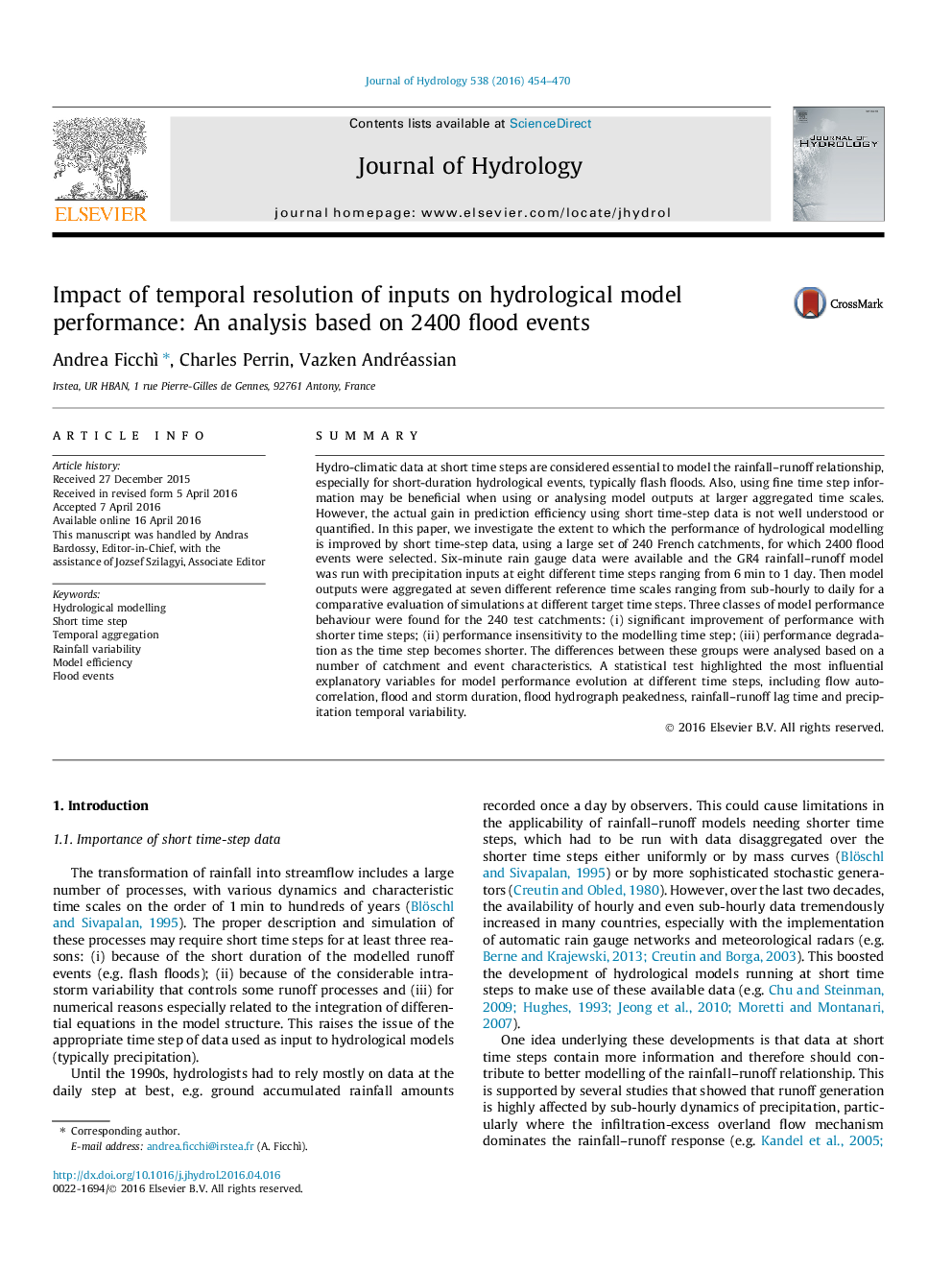| کد مقاله | کد نشریه | سال انتشار | مقاله انگلیسی | نسخه تمام متن |
|---|---|---|---|---|
| 6409686 | 1629914 | 2016 | 17 صفحه PDF | دانلود رایگان |
- A rainfall-runoff model was run at eight different time steps on 240 catchments.
- Model outputs at different time steps were compared at seven evaluation time scales.
- Performance at finer time steps depends on flood characteristics, e.g. lag time.
- Daily performance improves with sub-daily time steps for the most reactive basins.
SummaryHydro-climatic data at short time steps are considered essential to model the rainfall-runoff relationship, especially for short-duration hydrological events, typically flash floods. Also, using fine time step information may be beneficial when using or analysing model outputs at larger aggregated time scales. However, the actual gain in prediction efficiency using short time-step data is not well understood or quantified. In this paper, we investigate the extent to which the performance of hydrological modelling is improved by short time-step data, using a large set of 240 French catchments, for which 2400 flood events were selected. Six-minute rain gauge data were available and the GR4 rainfall-runoff model was run with precipitation inputs at eight different time steps ranging from 6Â min to 1Â day. Then model outputs were aggregated at seven different reference time scales ranging from sub-hourly to daily for a comparative evaluation of simulations at different target time steps. Three classes of model performance behaviour were found for the 240 test catchments: (i) significant improvement of performance with shorter time steps; (ii) performance insensitivity to the modelling time step; (iii) performance degradation as the time step becomes shorter. The differences between these groups were analysed based on a number of catchment and event characteristics. A statistical test highlighted the most influential explanatory variables for model performance evolution at different time steps, including flow auto-correlation, flood and storm duration, flood hydrograph peakedness, rainfall-runoff lag time and precipitation temporal variability.
Journal: Journal of Hydrology - Volume 538, July 2016, Pages 454-470
